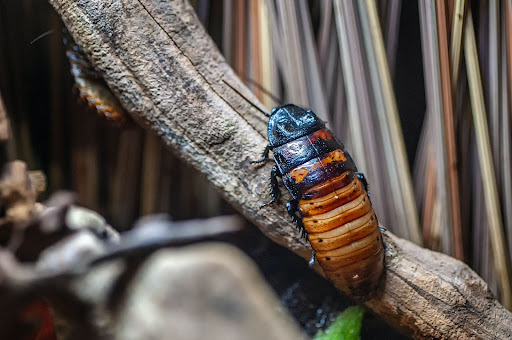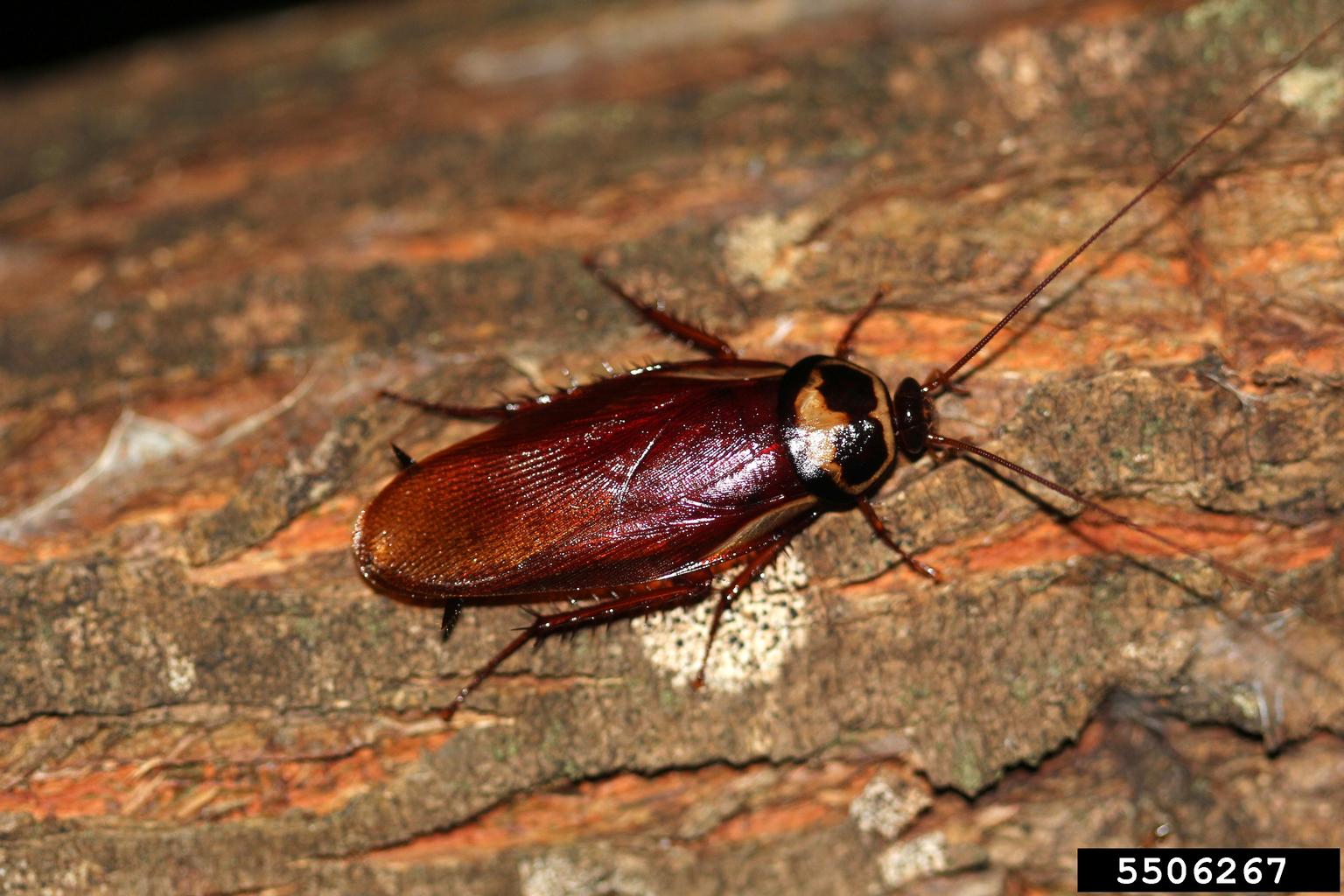Cockroaches have been living amongst humans for thousands of years. Their resiliency is legendary, but many people find their presence distressing and unhygienic.
One question that often arises about these persistent pests is their activity pattern: Are cockroaches nocturnal or diurnal? And, importantly, what are the natural roach repellents that can help to keep them at bay?
Understanding Cockroach Behaviour: Nocturnal or Diurnal?
Understanding the activity patterns of cockroaches is essential for both scientific study and effective pest control. Cockroaches are primarily nocturnal insects, meaning they are most active during the night.
This nocturnal behaviour is generally considered an evolutionary adaptation that allows them to best survive and thrive in environments where they cohabitate with humans and other animals.
During the day, cockroaches prefer to hide in dark, moist places that offer safety and seclusion. These hiding spots can range from cracks in the walls and behind appliances to under sinks and inside cabinets. In the wild, roaches might hide under wood piles or leaf litter.
Their flattened bodies allow them to squeeze into tight spots, making it difficult for predators and humans alike to locate them.
The presence of cockroaches during the day is usually a red flag, as it often indicates a significant infestation. As their numbers increase, so does competition for these hiding spots. The excess population is then forced out during daylight hours, which is contrary to their usual behaviour.
Why are Cockroaches Nocturnal?
Cockroaches, like many other insects and animals, have adapted to a nocturnal lifestyle for various advantageous reasons. Let’s discuss these factors:
Less Predation
Being active during the night provides cockroaches with an added layer of protection against predators. Many potential threats, such as birds and humans, are diurnal and most active during daylight hours. By venturing out primarily at night, cockroaches significantly decrease the chances of encountering these threats, thus increasing their chances of survival.
Greater Food Opportunities
A nocturnal lifestyle also works to the advantage of cockroaches when finding food. With humans, who are primarily diurnal creatures, household activity decreases significantly at night.
This reduction in activity allows cockroaches to scavenge for food scraps undisturbed. They can explore kitchen areas, garbage cans, and other potential food sources, taking advantage of the leftovers from human meals without the risk of being swatted or squashed.
Optimum Environment for Reproduction and Growth
The nocturnal lifestyle offers an optimal environment for cockroaches to reproduce and grow. The darkness and quiet of the night create an ideal setting for mating rituals and egg-laying. The cooler temperatures at night are beneficial for the development of their eggs, contributing to the survival and growth of the next generation of roaches.
To summarize, the nocturnal behaviour of cockroaches is a complex interplay of various factors, all aimed at enhancing their survival in a world full of threats. Understanding these patterns can assist in developing effective control strategies, including the use of natural roach repellents.
How do cockroaches see in the dark?
Cockroaches are also physically adapted for a nocturnal lifestyle, just like many other nocturnal insects have compound eyes that give them excellent night vision. Cockroaches need to see clearly in the dark to avoid predators and to find food.
These are just the most obvious problems with having poor sight at night, there are more subtle issues that could arise like getting lost, as well as finding mates. Compound eyes are composed of many individual units called eyelets, the arrangement and links of these eyelets to neurons can vary significantly, in addition to numerous other factors. This variability explains why diurnal species of insects also have compound eyes and good daytime vision; slight variations can drastically alter their vision.
Natural Roach Repellents for the House
The use of chemical roach killers has been commonplace for many years. However, these products often come with risks to other animals, humans, and the environment at large.
Considering these factors, natural roach repellents have gained popularity as a safer, eco-friendly alternative. These remedies offer effective ways to deter roaches without causing undue harm to the environment or non-target organisms. The following are some of the tried-and-tested methods:
Essential Oils as Natural Roach Repellents
Essential oils, derived from various plants, have been used for centuries for their potent aromatic properties. These oils can also be surprisingly effective at deterring a variety of pests, including cockroaches. Here are some key oils that have proven their efficacy as natural roach repellents:
Peppermint Oil
Peppermint oil’s strong scent is not just refreshing for humans, but it is also repugnant to cockroaches and many other pests. To utilize this oil as a repellent, mix a few drops of it with water in a spray bottle and use it around your house.
Focus on areas where you’ve noticed roaches, such as behind appliances, under sinks, or around baseboards. The refreshing aroma will permeate your home and keep those pesky roaches at bay.
Cypress and Cedar Oils
These oils have been recognized for their roach-repellent properties. Cypress and cedar oils can be used in a similar manner as peppermint oil.
Dilute these oils in water and spray the solution around the potential hiding and breeding spots of roaches. Not only will these oils deter the roaches, but they will also provide your home with a pleasant, woodsy aroma.
Diatomaceous Earth: A Natural Roach Killer
Diatomaceous earth (DE) is a naturally occurring powder made from the microscopic remains of fossilized aquatic organisms, called diatoms. The razor-sharp edges of DE can penetrate the protective exoskeleton of cockroaches, leading to dehydration and death.
To use DE, lightly sprinkle it in areas where you’ve seen roach activity, such as along baseboards, under appliances, or in cupboards. As roaches crawl over the DE, it will stick to their bodies and start working its lethal action. Keep DE dry, as water reduces its effectiveness.
Boric Acid and Sugar: A Deadly Mix for Roaches
Boric acid and sugar mixed together make a lethal combination for roaches. The sugar works as bait, drawing roaches in, while the boric acid serves as a toxin that roaches carry back to their nests, poisoning the entire colony.
To create this potent mix, combine equal parts of boric acid and sugar. Sprinkle the mixture in areas where you have seen roach activity. Note, however, that while boric acid is less toxic to humans and pets than many commercial roach killers, it should still be used with caution.
Keep it out of reach from children and pets, and avoid spreading it in areas where food is prepared or consumed.
Choosing natural roach repellents over chemicals can offer an effective, safer way to manage a roach problem. By using methods like essential oils, diatomaceous earth, and a boric acid-sugar mix, homeowners can actively deter these nocturnal pests from their living spaces.
However, always remember that a serious infestation may require professional help, and these natural methods work best as preventive measures and for controlling smaller populations.
Summary
While cockroaches are nocturnal creatures by nature, a daytime sighting could suggest a more serious infestation problem. Thankfully, several natural roach repellents can help maintain a roach-free house. However, in case of a serious infestation, professional pest control services might be necessary.
About Discover Tutoring.
We are biologists by training and when we write an article we read the scientific literature to find the most accurate answers to your questions. We do not guess, we do not assume, we check the research. If you are interested in our conclusions and want to find out more, check out the references at the bottom of every page we post on nature.
References –


